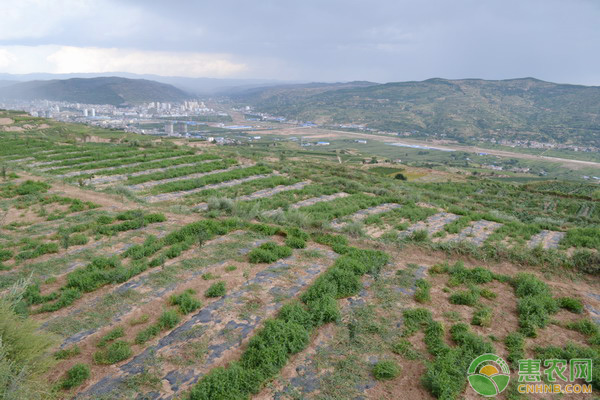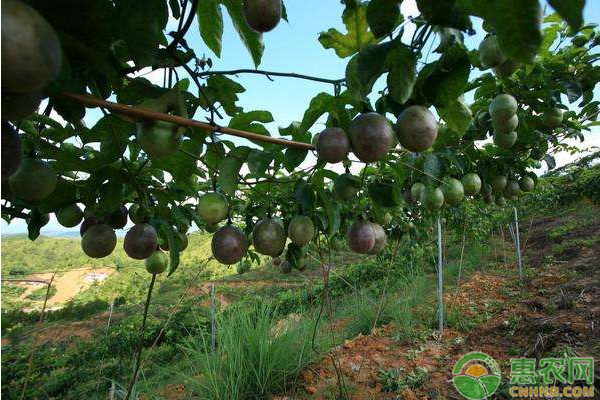Fruit growing lesson: how do apple orchards keep high yields?
Apple trees belong to Rosaceae, deciduous trees, the key growth and development in the warm temperate zone. In recent years, the production of iPhone in China continues to increase, but because some growers blindly follow the trend to expand the planting of apple trees, do not attach great importance to management methods, resulting in weak fresh fruit quality, poor taste and low production of iPhone. So how can the cottage keep increasing production? Next, let's take a look at it with the web editor.

I. selection of garden sites
According to the local soil, water resources, and climatic conditions, it is suggested that the garden should be selected as far as possible, such as flat land, hilly terrain on the sunny side of spring, etc. * plantations with good soil standards and irrigation standards. Moreover, according to the product standard of emerald-green organic chemical fresh fruit in China, the quality inspection of gas, farmland irrigation and soil should be carried out before the establishment of the garden to ensure that the site and basic standards of the garden are in line with the standard of emerald-green organic chemical fresh fruit production and manufacturing garden. to lay the foundation for later application for environmental protection products.
2. * soil improvement
In order to ensure that Fuji apple has a higher planting survival rate, improve seedling potential, reduce slow emergence, and maintain a bumper harvest of premature infants, reasonable soil improvements should be carried out in the specific production of the new planting garden in the autumn one year before spring planting. Before soil freezes in autumn, it is necessary to dig planting ditches (holes), the total width of planting ditches (holes) 60cm up and down, and deep 60cm up and down. The bottom layer of the planting ditch (hole) is covered with corn straw about 20cm thick, the middle and upper layers fill in about 20cm thick retting fertilizer, fill the heart * at the top, immediately backfill the soil, and pour through the water before freezing.
III. Cultivation of afforestation seedlings
1. Cultivation of green seedlings.
It is suggested that the introduced green seedlings should be cultivated in the seedling base of the plantation, and all the branches should be cut off to cultivate the main stem, so that the green seedlings can be integrated into the climate characteristics of our area as soon as possible. Moreover, the evenness of the cultivated green seedlings was improved, and the average plant height was 1.8~2.b250 and the thickness was above and below 2cm.
2. Select and equip pollinated trees
In the industrial park, a certain number of pollinated trees need to be planted, and high-quality species such as Gala and Qin Guan can be selected. The planting proportion of the main species, Bosch and pollinated species is generally controlled at 4, 1, 1, 3, and 1.
3. Cultivate large cup seedlings
A certain number of large cup seedlings should be cultivated in the seedling base, and when dead seedlings or lack of seedlings are found after planting, the large seedlings in the cup seedlings can be planted immediately anytime and anywhere to maintain the original garden.
IV. Planting
1. Prepare in advance before planting
Be sure to dig the planting ditch before freezing in the autumn of the year before planting. The total width and deep layer of the planting ditch should be 60~80cm to separate the table from the heart. When backfilling the soil, fill in the bottom layer with a 10-20 cm thick form * and a broken corn straw seedling compound, then fill in the stirring form * and retting fertilizer organic fertilizer, which is infiltrated with biological fertilizer, thin and thick 30~40cm.
2. During the planting period
The industrial park is generally planted in spring and planted before the bud sprout. according to the original average air temperature and soil temperature, it is generally carried out in mid-late April.
3. Relative density of planting
In order to improve the level of specialization in the project area and improve the efficiency and economic benefits, the way of wide row and sparse planting was adopted. The plant spacing of 4: 5 for premature infants could be planted into 2: 5, and the seedlings could be protected by 110 plants / 664m2.
4. Water injection, column, sub-film covering, fixed drying
Water permeability was applied immediately after planting, irrigation or tubule outflow irrigation technology was adopted, and water permeability was again after 7 days. Immediately after water injection, it is necessary to cover with gray-black agricultural plastic film and tamp the surrounding area with * cover. Because the seedlings are three years old, the ratio of height to width of fixed stem is 1.0-1.5m. Due to the high wind speed in spring in the industrial park, bamboo poles should be set up and tied next to each apple seedling, which has a very good effect of fixing and improving the dryness.
Fifth, fatten up
1. Set up a composting pit
A retting fertilizer pit should be set up in the plantation, and at least two layers of plastic rain-proof cloth should be laid at the bottom and around the pit to prevent the pollution of surface water sources by poultry excreta without retting fertilizer. The feces of pigs, sheep and poultry, corn stalks, pruned branches of broken plantations and broken cut weeds were popularized into the compost pit, and combined with the application of fermentation bacteria, the plastic rain-proof cloth was finally fitted and tightly covered.
2. Equipped with "organic fertilizer"
The "organic fertilizer" adopted in this technology, in addition to the organic fertilizer which has been fully retted for one year, should also participate in the sheep manure, broken corn straw and weeds, and combine a small amount of compound fertilizer with each other.
3. Time and amount of application
Application time: the new project of iPhone promoting early and high efficiency and green ecological circulation system is dominated by autumn fruit harvest and assisted in the following spring.
Application amount: the amount of fertilizer should be determined according to the crown diameter and production. The organic fertilizer 2000~3000kg/664m2 was applied in the young tree stage of iPhone in the project area and 3000~4000kg/664m2 in the high yield period.
4. Fattening method
After the fruit is harvested every autumn, the equipped "organic fertilizer" is scattered symmetrically under the tree trunk, and all the deep pines in the garden are integrated in the depth of 20 ~ 30 centimeters, turning the organic fertilizer and weeds into the ground together, and carry out reasonable damage to the rhizome to promote the budding of new roots and improve the absorption of tree stems. Before the sprouting period in the next spring, the same method of furrow application was used to apply organic fertilizer, and strong base fertilizer and compound fertilizer were applied to each other.
5. of course, grass grows in line and row, and it is covered under the trunk.
The project area uses row and row to grow grass, which has a very good effect of locking water and moisturizing, reducing the occurrence of diseases and so on. Agricultural plastic film or ground cloth is used under the tree trunk to avoid the growth and development of weeds, maintain water *, reduce water loss, improve soil temperature and promote the safety of tree stems through the winter. Row and row grass and trunk cover can reasonably reduce the frequency of water injection.
VI. Plastic surgery, cosmetic trimming
In order to maintain the overall technical goal of premature infants and bumper harvest, Gala and Qin Guan should be more meticulous and stringent in the technical stage of plastic surgery and clipping. Plastic surgery can use spindle shape or small crown sparse layer shape. In the young tree stage of the two species, the amount of pruning should be small, cut as little as possible, and leave more branches. When peach trees enter the high-yield period, they should appropriately carry out branch thinning or contraction.
7. Fruit bagging
During the mature period of apple pear, a specially made fruit bag is used to put the young fruit into the bag. Fruit bagging solution on the one hand can improve the quality of fruit, so that the exocarp skin is smooth, color, aroma and taste are good; on the other hand, it can reduce the damage of bean pests to the fruit. Fruit bagging is often made of two layers of paper bags, the inner layer of which is made of antibacterial paper and the surface layer of moisture-proof paper. In order to make the fruit with good color, generally remove the fruit bag about 30 days before harvest, should prevent removing the paper bag at noon, remove the surface paper bag first, and then remove the inner paper bag 2 days later.
VIII. Disease prevention and control
Every autumn immediately eliminate diseased branches, diseased leaves and rotten fruit in the plantation. The old warped skin and rotten disease spots on the tree pole should be shaved off immediately, smeared with microbial medicine, and the tree pole in front of the Beginning of Winter should be painted white. The use of Tangku trapping liquid, trapping belt, armyworm board, insecticidal lamp and other physical prevention technology can reasonably control leaf moths, beetles and other insect pests.
Above is the technical key point for grass huts to keep increasing production, and the sales market demand of iPhone is relatively large, so more and more farmers are planting iPhone. However, farmers in the case of planting iPhone, must grasp the above technical key points, in order to achieve the goal of increasing production, look forward to the above content can have some assistance to apple growers.
Related
- Moge, come on! The staff of the peasant association in the producing area of cantaloupe were frightened when the crowd gathered.
- Causes and Solutions of low Fruit setting rate of Apple
- Symptoms and control measures of passion fruit virus disease
- Fruit growing lesson: how do apple orchards keep high yields?
- Can you build orchards in the mountains? What are the pros and cons?
- How to manage the coloring period of Crisson grape?
- This paper introduces the processing technology of two kinds of fig products.
- How much is a month for retired teachers in rural areas by 2020?
- How can strawberry planting increase sugar content? We should pay attention to management in many aspects.
- What are the cultivation techniques on how to improve the yield of golden fruit?



